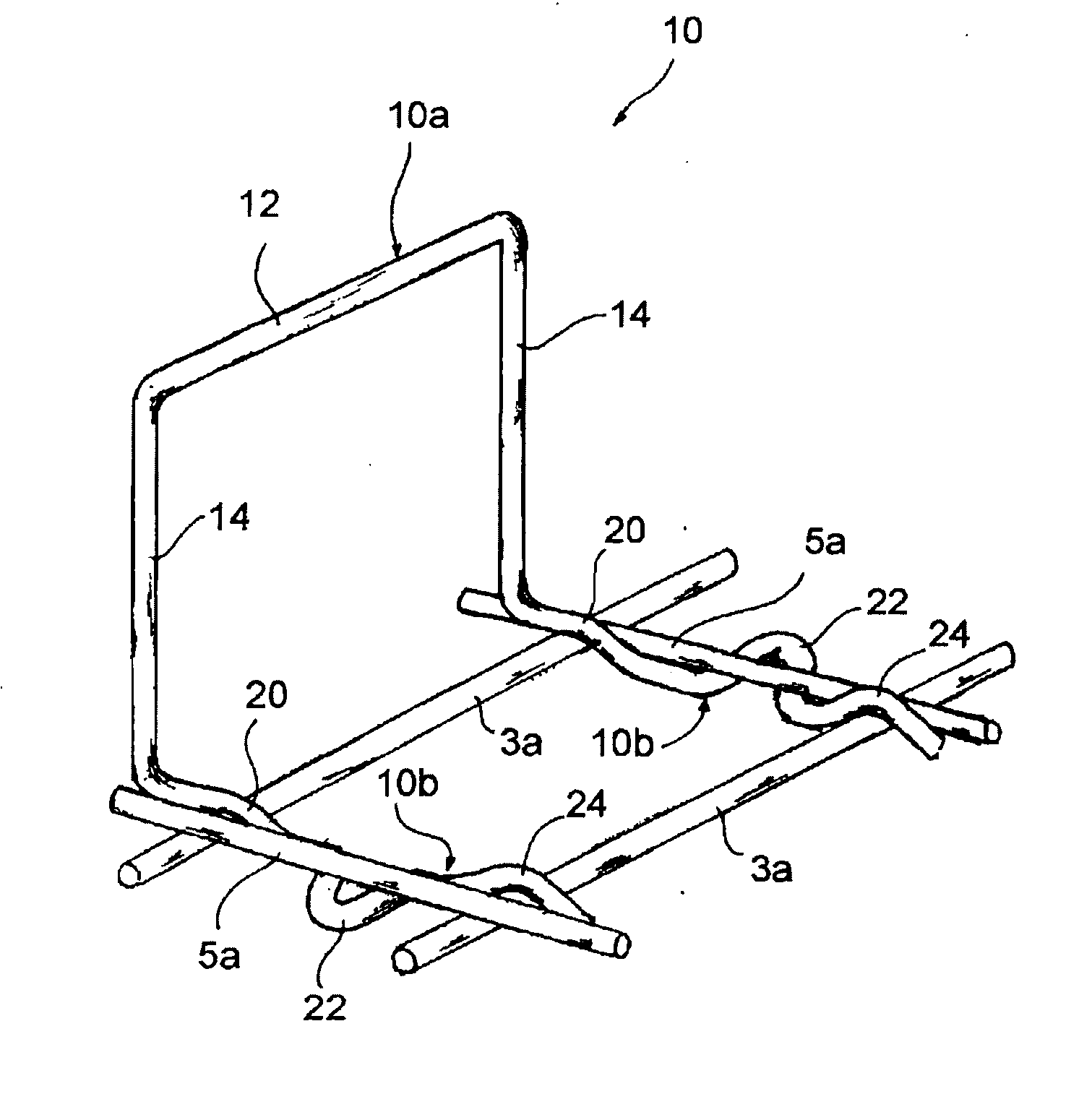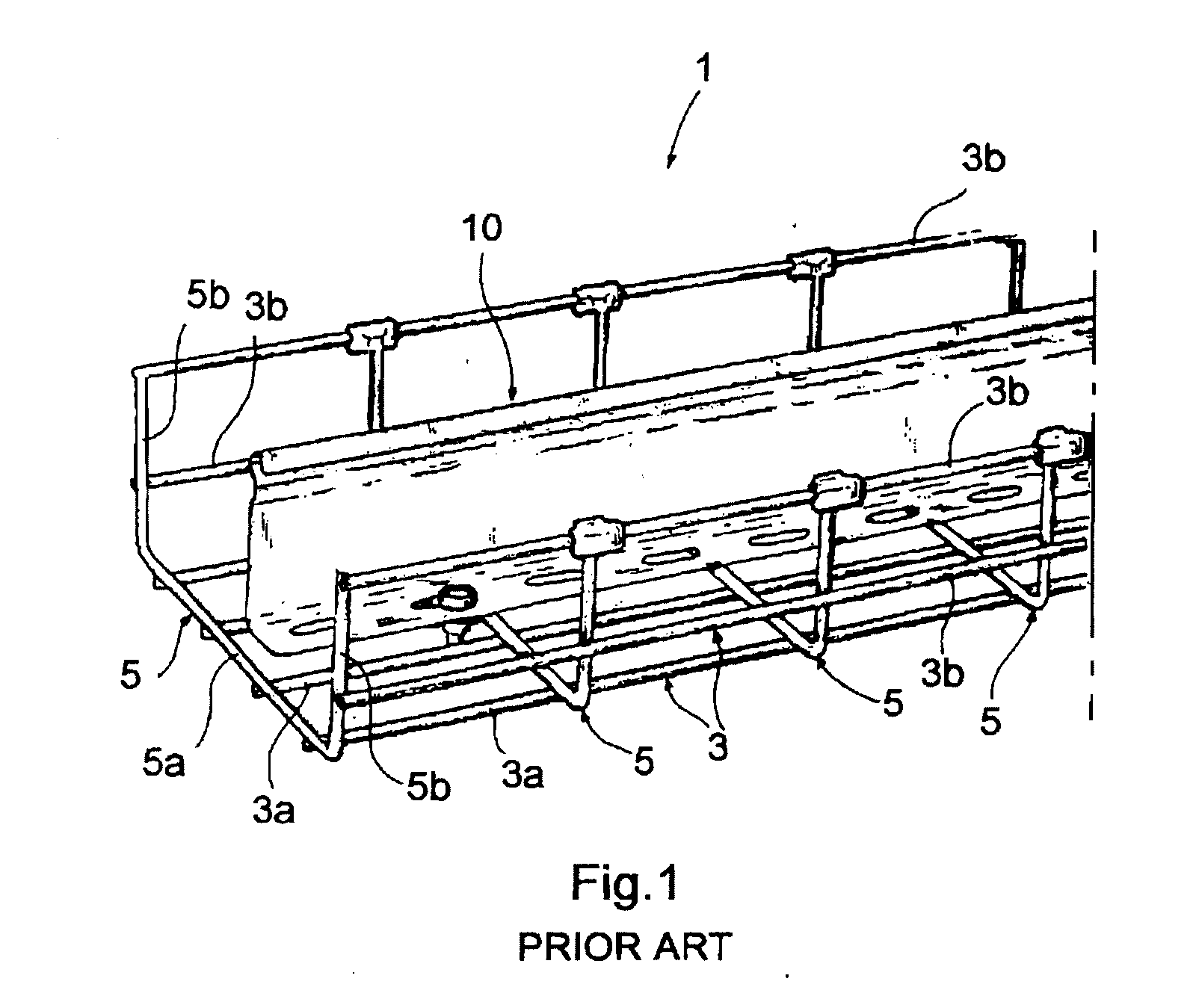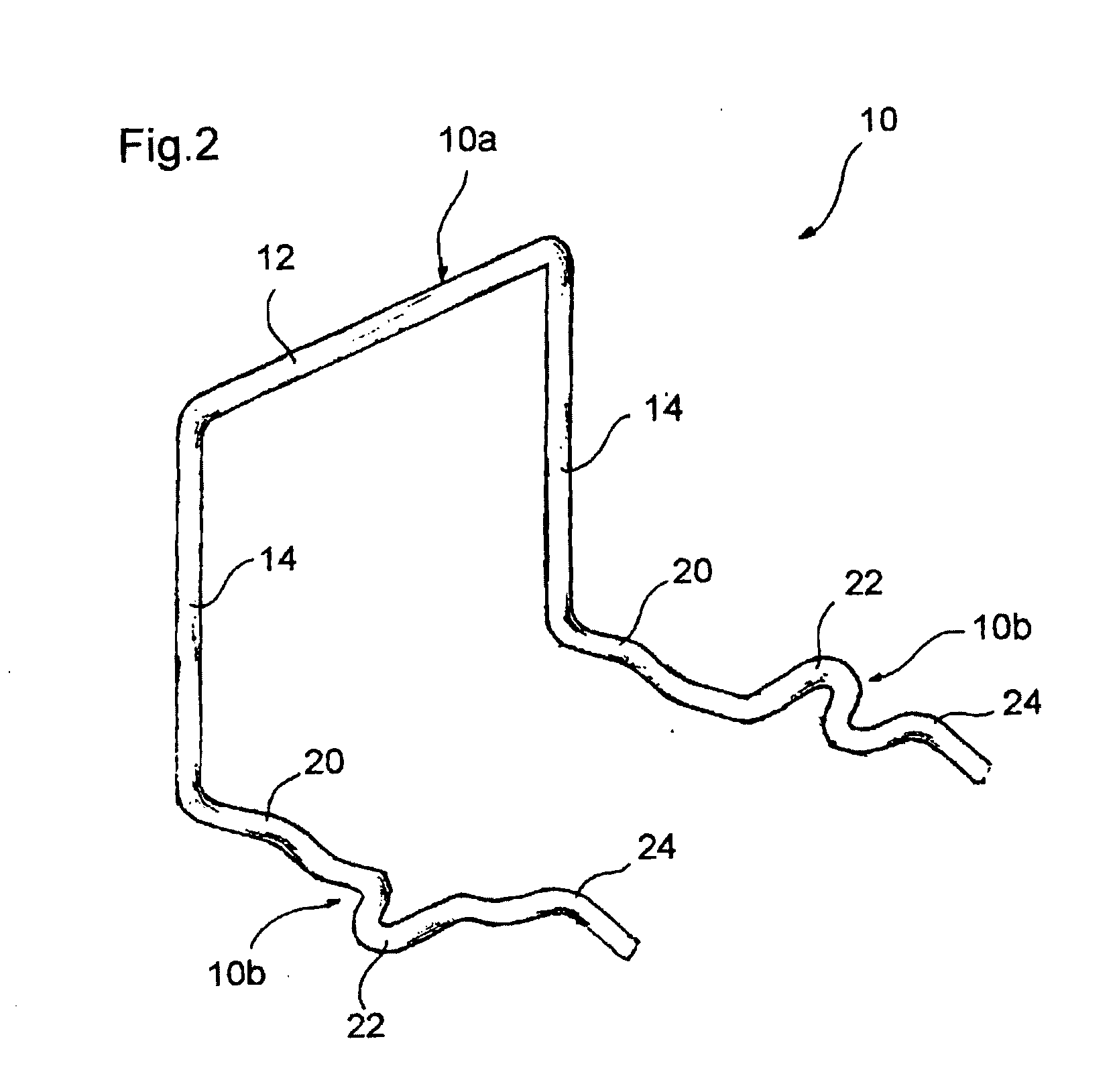A separator element for a mesh cable duct and a mesh cable duct comprising such element
a technology of separator elements and mesh cables, which is applied in the direction of pipe supports, electrical appliances, pipes/joints/fittings, etc., can solve the problems of difficult to ensure the continuity of separator elements, upward or downward bends, etc., and achieves the effect of reducing the number of accessories, facilitating production and saving storage costs
- Summary
- Abstract
- Description
- Claims
- Application Information
AI Technical Summary
Benefits of technology
Problems solved by technology
Method used
Image
Examples
Embodiment Construction
[0027] In the following description and claims, terms such as “longitudinal” and “transverse” as well as “vertical” and “horizontal” are intended to refer to the normal arrangement of a cable duct, to the orientations of the drawings and to the condition in which a separator element is fitted in a duct. In particular, “longitudinal direction” is defined as the main extension direction of the duct and hence of the cables therein, “longitudinal plane” defines a vertical plane identified by the longitudinal direction, “transverse direction” defines the direction perpendicular to a longitudinal plane, and “transverse plane” or “transverse cross-section” defines a section plane perpendicular to the longitudinal direction of the duct.
[0028]FIG. 1, which has already been mentioned in the introductory portion of this description with reference to the prior art, shows a cable duct 1 of the type generally known as a “mesh duct”, comprising a series of longitudinal wires 3 and a series of tra...
PUM
 Login to View More
Login to View More Abstract
Description
Claims
Application Information
 Login to View More
Login to View More - R&D
- Intellectual Property
- Life Sciences
- Materials
- Tech Scout
- Unparalleled Data Quality
- Higher Quality Content
- 60% Fewer Hallucinations
Browse by: Latest US Patents, China's latest patents, Technical Efficacy Thesaurus, Application Domain, Technology Topic, Popular Technical Reports.
© 2025 PatSnap. All rights reserved.Legal|Privacy policy|Modern Slavery Act Transparency Statement|Sitemap|About US| Contact US: help@patsnap.com



